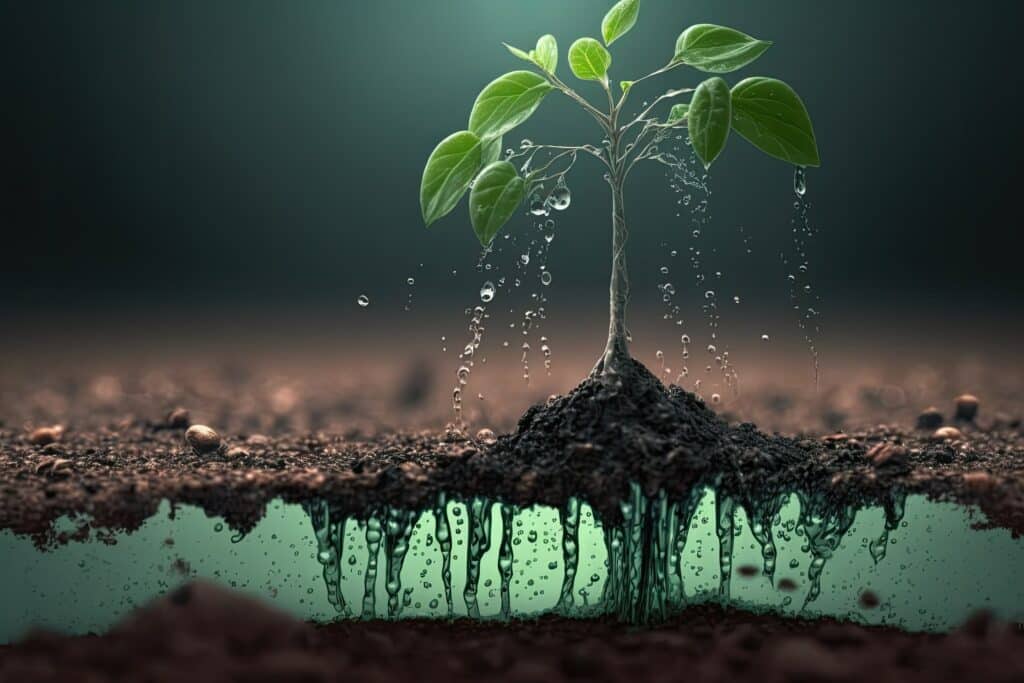Phytoextraction: these plants can clean up pollution
- Mining and metallurgy activities severely degrade and erode soils, preventing vegetation from developing.
- It is possible to restore ecosystems by using phytoextraction: certain plants extract metal elements from the soil and store them in their leaves.
- This technique is inexpensive, creates a circular economy and allows for the rehabilitation of soils in an ecological restoration process.
- However, phytoextraction has certain limitations, such as the total duration of the process or the natural capacities of plants.
- The same process has been developed for water decontamination, using aquatic plants: this is rhizofiltration.
You work on depollution, can you tell us more about the processes you are developing?
We restore terrestrial and aquatic ecosystems using plants that accumulate metallic elements. Mining and metallurgical activities severely degrade soils, no vegetation can develop there. These bare soils are severely eroded: dust loaded with metallic elements flies away or is washed into watercourses, polluting the surrounding environment. Restoration is not limited to decontamination: the sustainable reintroduction of suitable plants is a priority to limit the dispersion of pollutants.
What plants are you talking about?
We have studied several terrestrial plants that are tolerant and hyper-accumulate metallic elements: stinkweed (Noccaea caerulescens), an ecotype of vulnaria (Anthyllis vulneraria) and trees such as Geissois pruinosa and Grevillea meisneri in New Caledonia. Each of them carries out a natural phytoextraction process: they extract metallic elements from the soil through their roots and transport them in the sap until they are stored in their leaves in very high concentrations. In the Gard region of France, the common ragweed stores more than 17,000 ppm of zinc. We estimate that if plant cover reaches 70%, 27 kg of zinc per hectare can potentially be extracted from the soil at each harvest1. In New Caledonia, harvests of a single Grevillea meisneri tree contain 2.5 kg of biomass containing more than 10,000 ppm of manganese2.
What is the ecological benefit of these plants storing large quantities of metals?
Several theories are being explored. In the case of Noccaea caerulescens, it is that it does not resist competition well and is very quickly invaded by surrounding plants. In these polluted environments, it is the only one to survive. In addition, it classically defends itself from herbivores by releasing toxic compounds called glucosinolates. When it is rich in zinc, the plant correlatively reduces the production of glucosinolates: this is an indirect way of protecting itself from herbivores3.
Why is it necessary to develop new rehabilitation solutions?
The available solutions are not satisfactory. One of them consists of confining the pollution by covering the soil with materials. However, the pollution continues to spread into the water table as water infiltrates. The second solution is very costly: it consists of excavating the contaminated soil and treating it chemically in appropriate plants. This generates a new waste product: the decontaminant associated with the metals…

Why are plant-based processes more satisfactory?
Phytoextraction is efficient, inexpensive and allows for the rehabilitation of soils in an ecological restoration process: it is a long-term vision. And above all, it creates a circular economy that does not generate any waste. To take the example of New Caledonia, the litter from trees that hyperaccumulate manganese or nickel is harvested and transformed into mineral matter. The metals are used as catalysts, called ecocatalysts. They replace those traditionally used for the synthesis of drugs, for example, many of which are now being challenged by European chemical regulations (REACH)4. The eco-responsible use of these plants is at the heart of our developments: this is the only way to sustain restoration efforts in the long term.
Doesn’t depollution by phytoextraction have certain limits?
If the objective is to clean up the soil, it can take a long time: in the Gard region, the Ademe estimates that the total clean-up of the old decantation basins would take 50 years. Moreover, these techniques cannot be generalised: each plant is chosen in relation to its natural habitat. It is inconceivable to install a hyper-accumulative plant from New Caledonia in mainland France. In Oregon, the establishment of a species of European origin has led to a catastrophic situation: it has become invasive. Finally, the possibilities are limited by the natural capacities of the plants. There are many species capable of accumulating nickel, zinc, or manganese. On the other hand, the capacities are limited – if not impossible – for other elements such as arsenic, cobalt or copper.
These limitations have led us to develop a different process for the depollution of water. It is a very important resource to preserve, but it is polluted by many human activities.
Can you tell us more about this new process?
It is based on rhizofiltration and biosorption. We use aquatic plants capable of sequestering metals in their roots. They are very efficient: they have molecular antennae that capture the nutrients diluted in the water… and also the metal pollutants.
The use of dead plants is a major advance in water treatment: they retain their capacity for depollution, but this makes the process scalable. The roots are crushed and transformed into plant powder, then placed in a column in which the water circulates. The metals are thus sequestered by the powder. We have demonstrated good performance of these plant filters to treat mining effluents in France polluted with zinc, iron and arsenic. The process is also adapted to the chemical industry to capture effluents leaving reactors. In the laboratory, we are experimenting with the treatment of dreaded organic pollutants such as chlordecone, and our results are very conclusive5.
Does the circular economy also have an important role to play in water decontamination?
Of course it does! Plant filters loaded with metallic elements are again transformed into ecocatalysts. The main advantage? Aquatic plants capture certain rare earths or elements of interest such as palladium. This is a strategic resource: Russia is currently the largest producer and many industries use it massively (electronics, automobile, pharmaceutical). Recycling it has become a priority, and plant filters make it possible6. With BioInspir, we market molecules of interest – fragrances and solvents – that are 100% biobased, manufactured using these ecocatalysts without chemical inputs. They are used in cosmetics, perfumery, and fine chemistry. Ecocatalysis is an opportunity to revisit chemistry by limiting its environmental footprint to a minimum7.
We have even taken the virtuous circle a step further… Invasive alien plants are one of the main threats to biodiversity in the world. Many of them are used in our processes: Asian knotweed, water primrose, water lettuce, etc. We harvest them massively in the wetlands of Occitania to integrate them into our plant filters. This reinforces the support for management efforts and the non-proliferation of plant species that have become dangerous.














